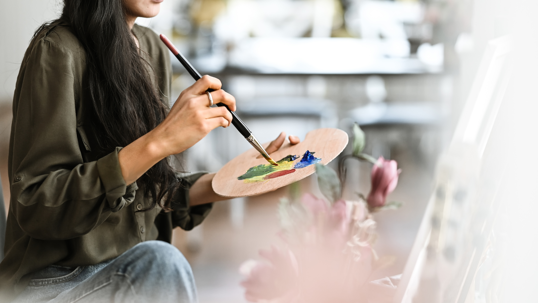

Recently, a piece of art created using artificial intelligence (“AI”) won first place in an art contest at the Colorado State Fair. Aside from the debate over whether it was “fair” to enter artwork into the competition that was created using AI, that win by a computer has sparked lively debate in the legal world over who, if anybody, can own the copyright in a piece of art created by AI.
The art piece in question was made using a “text to image” program. The human user enters in word descriptions for what he/she would like the image to look like. Then, the AI program will assemble various images or combine portions of different images to create a final work of art that is then approved or rejected by the human user. The human user can alter its description(s) until the computer generates an image that is desired by the human.
In order to have a copyright, there must be an original work of authorship, fixed in a tangible medium of expression. In the situation at hand, a couple of the key questions become (1) who is the “author;” and (2) can a non-human own a copyright?
The courts have fairly clearly answered the question about whether a non-human can own a copyright. In about 2011, there was a key case where a monkey grabbed a photographer’s camera and took a selfie. Through that case, it became clear that an animal could not own a copyright. Earlier this year, the US Copyright Office also affirmed a 2019 decision that said artificial intelligence could not be the “author” of a work and could not own the copyright.
So, the question remains as to whether the human user could be considered the “author” for purposes of copyright. The human user who prompted the AI to create the award-winning picture in Colorado states that he took about 80 hours entering terms into the computer and modifying his descriptions until he got the work that he determined was to the aesthetic he wants.
An argument could certainly be made that such work and control over the terms, the modification of the terms, and approving or rejecting the image(s) generated by the computer constitute a work of authorship by the human user. Each stroke of the key could be compared to the stroke of the paint brush or pen. Rejecting the image provided and modifying the descriptive terms until the piece was as desired could be compared to an artist trying some new technique and then starting over again and again until they get the desired result. In that way, it could be argued that the human user is the true “author” of the work, and the AI is simple the brush that he/she was using.
However, an argument could also be made that the AI is actually creating the image. The human user would simply be providing the idea to the AI, and the AI is actually creating the image(s). Or, the entering of the descriptive terms by the human user could be compared to someone searching the internet for an image that already existed. So, it could be argued that the human user is not the real “author” of the work.
As is often the case, it takes time for the law to catch up with technology. This is a developing area of the law. While arguments can be made on both sides, we may have to wait and see if the courts start to weigh in on the matter before a definitive answer can be achieved.
If you own a copyright and feel that someone is or has copied your work, contact the trial attorneys at the Goosmann Law Firm, PLC, in its Sioux City, Omaha, Sioux Falls, or Spirit Lake offices.
1] https://www.cnn.com/2022/09/03/tech/ai-art-fair-winner-controversy